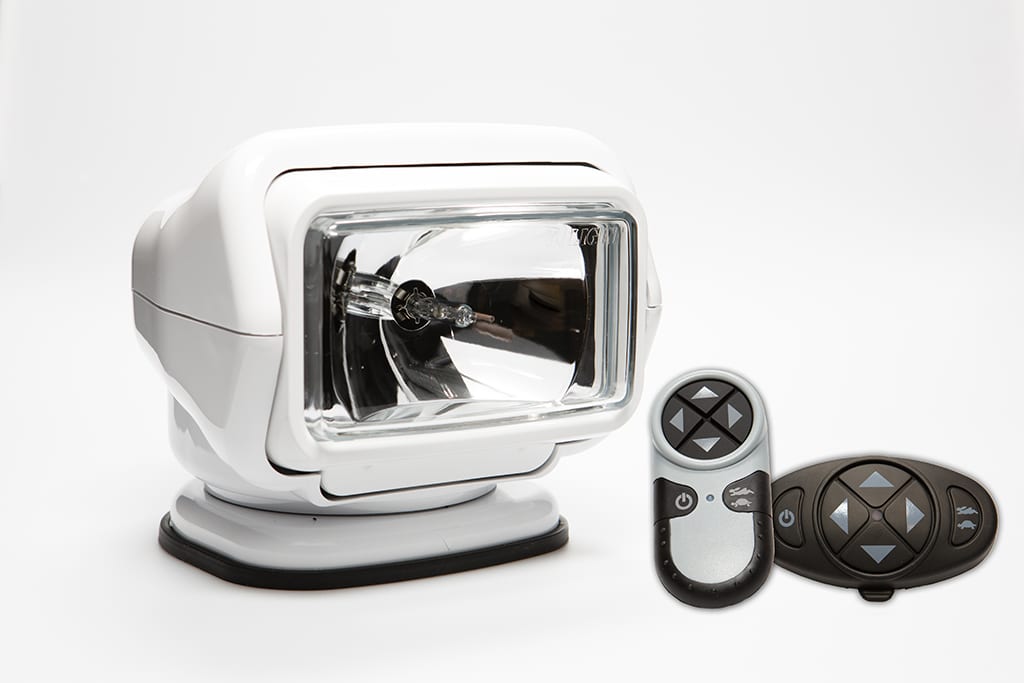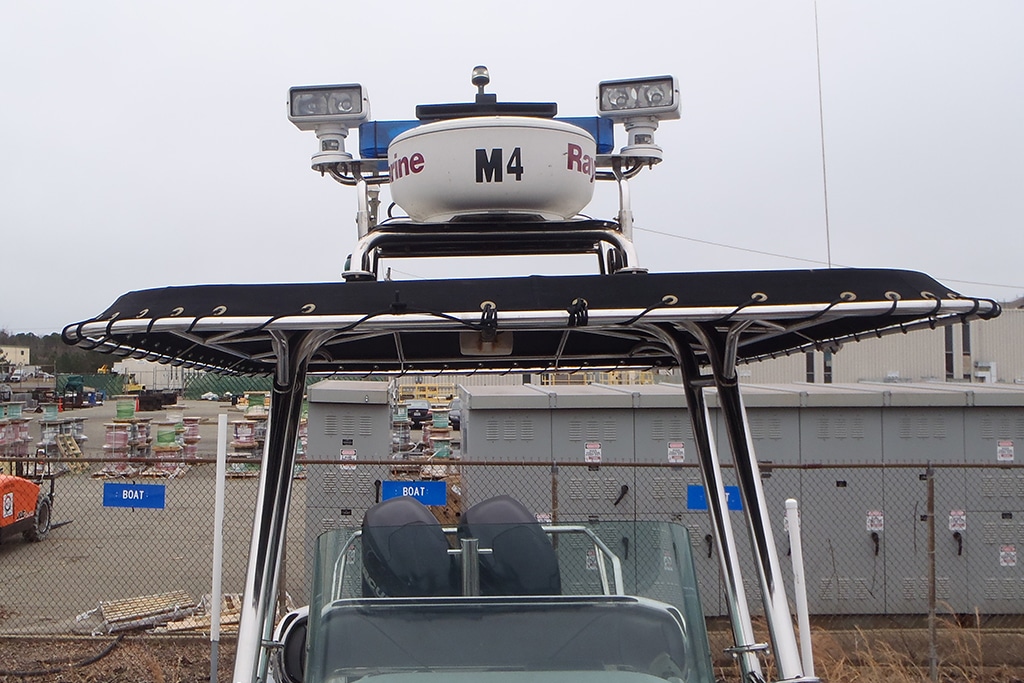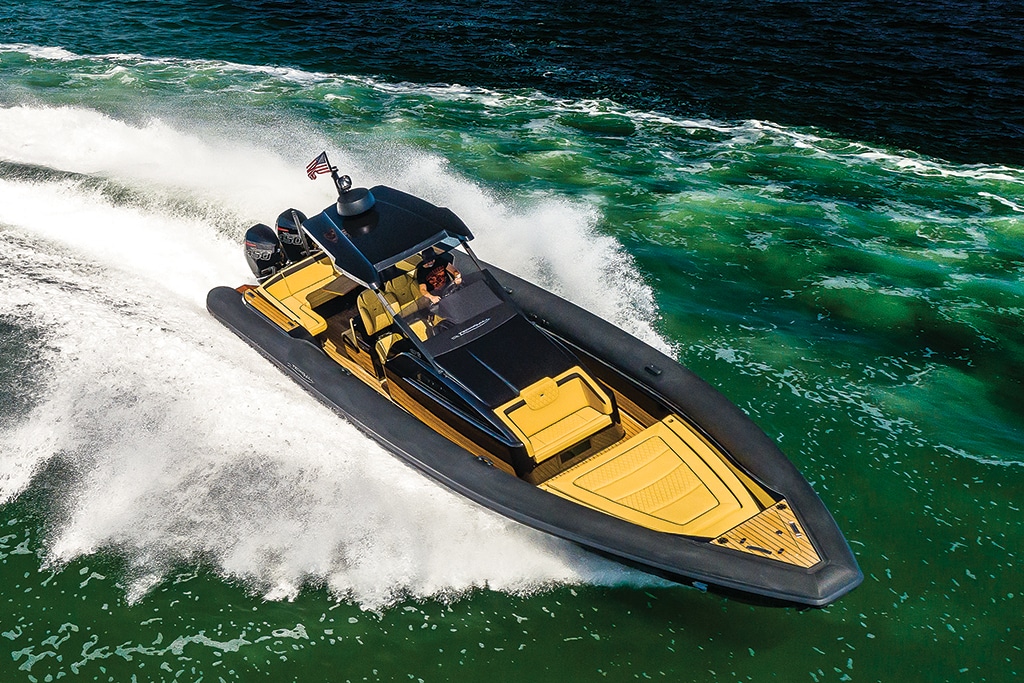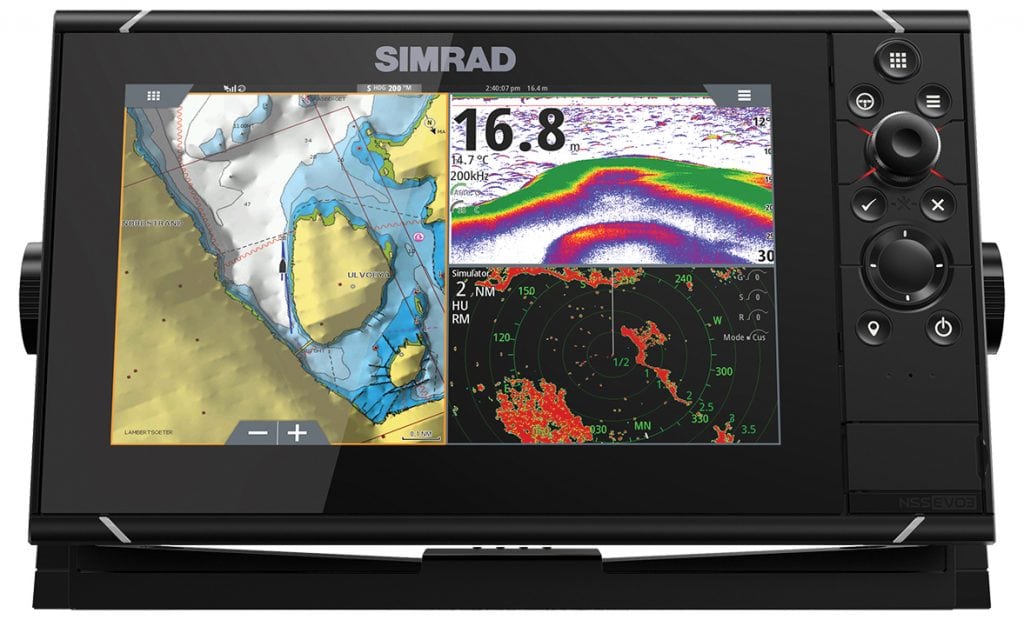Under the Spotlight
Bright ideas for selection and installation
By Frank Lanier, Southern Boating 2021
Spotlights are one of those indispensable boat tools you never really appreciate until they’re needed. From finding navigation hazards to signaling other boats, if you sail at night (either on purpose or due to unplanned circumstances) a spotlight is essential.
They can be grouped into two basic categories: fixed mount and portable. Both have pros and cons which can help you select the one that best suits your needs.

Fixed or Portable
Fixed or permanently mounted spotlights provide convenience and instant access when needed. While old-school spotlights were typically operated manually, most modern units are remotely operated using a keypad and internal electric motor to provide azimuth and elevation control.
They can mount on a hardtop but also forward on a bow railing, deck, or other suitable location. Some units, like the Golight Stryker GL-3067, feature a wireless remote, allowing you to control the spotlight from anywhere on board.
Mounting a fixed spotlight as far forward as practical is normally preferred; however, when selecting a location, be sure to consider problematic issues such as backscatter or glare. A hardtop-mounted unit can blind the helmsman by lighting up the bow or foredeck during operation.
Conversely, a unit mounted on the bow railing can vibrate excessively while the vessel is underway making it difficult to aim the light or keep it on target. In such cases, mounting the unit directly to the foredeck will likely be a better option.
One way to ferret out any potential problems when selecting a location is to temporarily mount the unit first. This allows you to see how it performs before firing up that drill or hole saw. That’s also the time to look at any installation issues with mounting (such as access below for mounting hardware) or routing control and power wires.
Portable or handheld spotlights can also be divided into two groups: wired and battery-powered.
Wired units plug into your boat’s 12 VDC system using a cigarette-lighter receptacle or other such connection. The best ones feature a locking plug which prevents you from accidentally pulling out the plug during use (something that typically happens at the worst possible moment). While power outlets are normally installed at the helm, other handy locations include the bow, flybridge, or even the engine compartment.
Battery-powered spotlights offer the freedom to move about the boat without regard for outlet locations or cord length. The downside is that, unlike wired spotlights (which will have power as long as your batteries are being charged), battery-powered spotlights have a finite amount of operating time.
Regardless of which handheld style you select, some features are desirable for both. First, choose a unit that’s waterproof and armored with rubber to protect against drops and bangs. A short visor or protrusion that extends past the lens will reduce glare and help save your night vision.
Other considerations include the type of handle (“pistol grip” designs are easier to aim and hold), weight (lighter may be more comfortable to use, but heavier typically means a bigger battery and longer operation), and battery type, specifically rechargeable or nonrechargeable batteries.
Rechargeable batteries are the winner hands down in most every case. If you choose a nonrechargeable battery-powered spotlight, it goes without saying (but here it is anyway): Keep spare batteries on hand. Chances are they’ll also die at the worst possible moment.
Finally, a unit with various light intensity settings is also a plus. Multiple settings allow you to maximize battery life while saving the brightest, battery-sucking mode for when you need it most.

You and Your Lumens
While grandad may talk about candlepower or watts, lumens (lm) are the new way of gauging how bright that new spotlight really is. Lumens are a measure of the total amount of visible light to the human eye. The higher the lumen rating, the “brighter” the light will appear.
Thanks to modern LED technology, using watts as a guide to brightness is also no longer relevant as more light output is achieved with less power consumption.
That being said, higher lumens do not always equate to a better overall spotlight. Everything has trade-offs. While a spotlight with high lumens is brighter, it also generates a greater amount of heat and uses more power, which (in the case of battery-powered units) reduces battery life.
The Last Word: Bulbs
Advances in LED technology have almost rendered this a mute talking point. LED lights can last for decades, a huge advantage over old-school incandescent bulbs (take that Mr. Edison). LEDs are also 80 percent more efficient, which equates to longer battery life and less heat. Traditional bulbs like xenon or halogen waste a large amount of the energy going to the light, which is lost in the form of heat.















